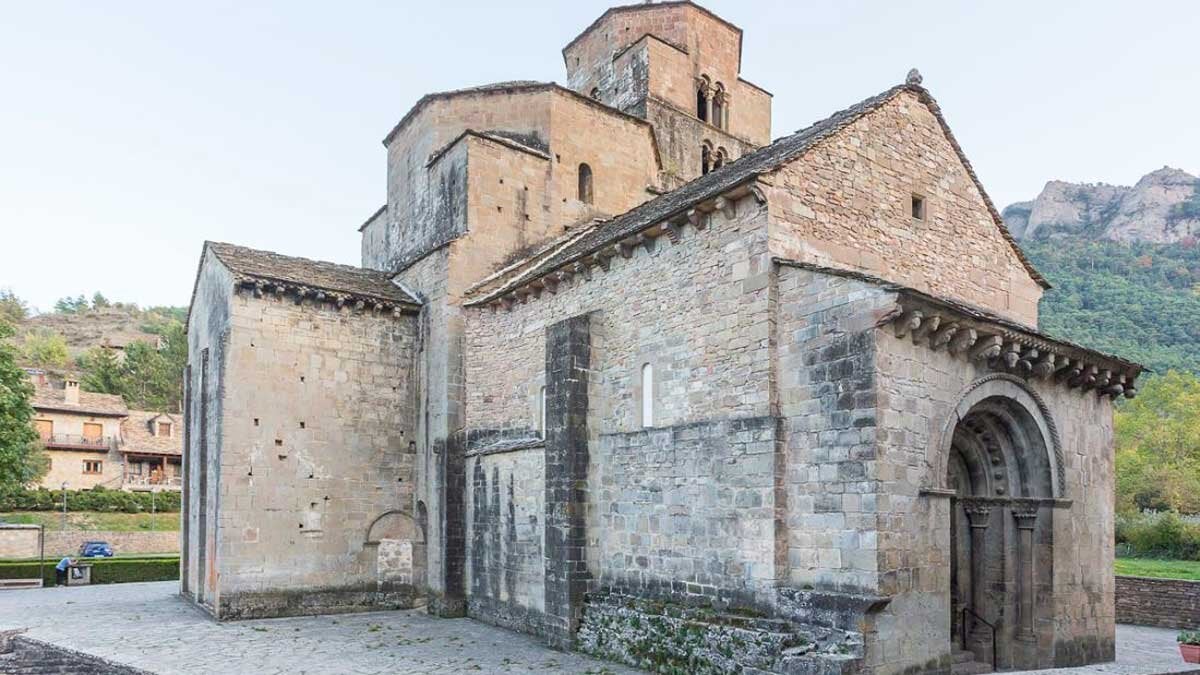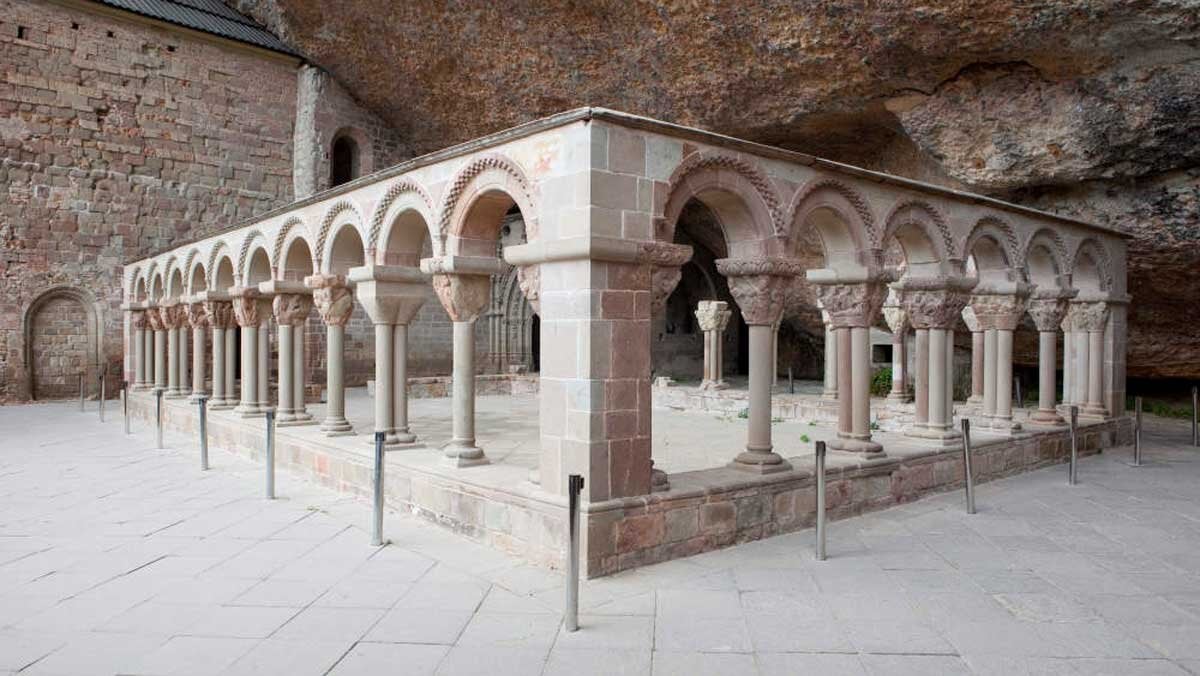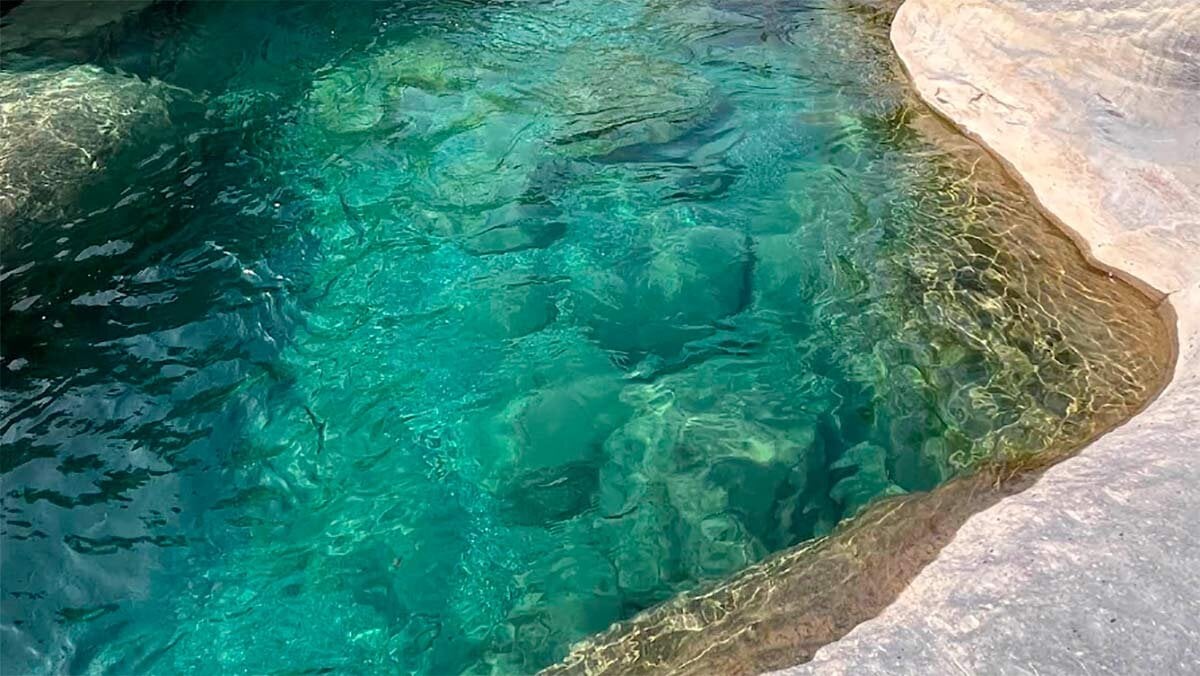
This monastery of the Pyrenees was a princess home: the town of Huesca where the daughters of the first king of Aragon lived
In the heart of Pyrenees Aragonese, a former monastery of Benedictine nuns gave rise to one of the peoples with the most history of the region: Santa Cruz de la Serós. There, between cobbled streets, leafy forests surrounded by mountains of solid rock, they lived almost a thousand years ago three personalities with real blood: the infants Aresa, Urraca and Sancha, daughters of the first king of Aragon, Ramiro I.
Lived just seven kilometers from the monastery of San Juan de la Peña, where the Church of Santa María de Santa Cruz de la Serós is currently rising. In Romanesque style, it is the only vestige of the missing female monastery founded by 1059 by Ramiro I, first king of Aragon. This Benedictine cenobium welcomed not only the Infantas, but also nuns of noble origin, which made the place an important religious and political focus during the twelfth and twelfth centuries.
Dedicated to the Holy Cross and inhabited by religious known as “Sorores” – hence the word “serious” -, this municipality still retains today the name and essence of that monastic past.
Santa Cruz de la Serós, the town that was home to the daughters of the first king of Aragon
Santa Cruz de la Serós is an essential stop for those who visit the surroundings of Jaca and San Juan de la Peña. Its charm not only lies in its history, but also in its traditional architecture, its cobbled streets and the impressive natural environment that surrounds it.
Despite its small size, it concentrates a great patrimonial value. The Church of Santa María, built in the eleventh century, is one of the best examples of Romanesque Lombardo in Aragon.
If you want to soak all your charm, here are a guide of places of interest what to see in Santa Cruz de la Serós.
Santa María Church
Located in the urban center of Santa Cruz de la Serós, the Church of Santa María is one of the undisputed jewels of the Aragonese Romanesque. Declared well of cultural interest and recognized as part of the world heritage of the Camino de Santiago, it is the only building that is kept at the foot of that former Benedictine abbey.
The temple presents Latin cross, unique nave with a cannon vault and a semicircular apse. In the southern arm of the transept, a powerful bell tower stands with a zigzagging profile dome, which gives the whole an unusual monumentality in the female romanic. Also highlight the sculpted capitals of the interior and polychromy remains that show that, originally, their walls were decorated in bright colors.

The Church of Santa María is one of the undisputed jewels of the Aragonese Romanesque. Photo: Aragon Tourism
Despite its external sobriety, the Church reflects the power that the monastery reached in the XI and XII centuries. In documents of the time it already appears cited as a place of donations and inheritances of Aragonese royalty. The figure of Doña Sancha, daughter of Ramiro I and widow of the count of Urgel, was key in her consolidation: she entered as a nun in 1070 and exercised as Abbess until her death in 1095.
The whole was abandoned by the religious in 1555, when they moved to Jaca, and over time the monastery was disappearing. Only the Church resisted the passage of the centuries, preserving until today as a testimony of the medieval splendor of Santa Cruz de la Serós.
The entrance is unique and includes the three monuments: Old Monastery, New Monastery and the Church of Santa María in Santa Cruz de la Serós. The current general price is twelve euros, with a reduced rate of seven with fifty euros (children from 6 to 14 years old, over 65, people with disabilities, young card, pilgrims, large family and groups) and free for children under 6 years.
San Caprasio Church
A few meters from the urban nucleus is the church of San Caprasio de Santa Cruz de la Serós, another of the great examples of Romanesque Lombardo in the Aragonese Pyrenees. Built in the first half of the eleventh century, under the reign of Sancho III el Mayor, this temple is one of the westernmost of its style in Aragon and is declared well of cultural interest.
In a sober appearance but with great architectural wealth, its interior presents a ship divided into two sections covered by edge vaults, with a trapezoidal presbytery covered by cannon vault and an apse decorated with small windows. On the outside, the blind architeates about brackets that run through the walls, generating a subtle game of lights and shadows very characteristic of the Romanesque Lombardo.
A Romanesque bell tower stands on the presbytery, added in the twelfth century, which was originally higher. During the seventeenth and eighteenth centuries two side warehouses were added and a second body to the tower, although these modifications were eliminated in a restoration made in the 60s to return its original form.
Located a few kilometers from the Aragonese branch of the Camino de Santiago, the Church could be linked to the cult of St. Caprasio, a saint traditionally associated with medieval pilgrims.
Old Monastery of San Juan de la Peña
Hidden under a huge rock that gives it name, the old monastery of San Juan de la Peña is one of the most emblematic places of the Romanesque in Aragon. Founded in the 10th century and refounded by Sancho el Mayor in the eleventh century, it was the first monastery to adopt the San Benito rule in the kingdom of Aragon and became a real pantheon. Here the first Aragonese kings were buried, and their remains can be visited today in an exhibition space that also houses sepulchral laudas and unique pieces linked to their lineage. In addition, the monastery was the scene of a key milestone in peninsular religious history: in 1071 he first hosted Spain The Roman liturgical rite, leaving behind the Hispanic-Visigodo rite.

The old monastery of San Juan de la Peña is one of the most emblematic places of the Romanesque in Aragon. Photo: Aragon Tourism
Inside, architectural jewels such as the pre -Romanesque church, the Romanesque cloister with capitals of great beauty, the mural paintings of San Cosme and San Damián, the superior church of the eleventh century, the Gothic chapel of San Victorián and the neoclassical royal pantheon, already of the 18th century, already of the 18th century. The set also includes a museum area dedicated to the monastery and the figure of the Count of Aranda, with personal objects such as its mortuary jacket and facial reconstructions.
Considered by tradition as the cradle of the kingdom of Aragon, the old monastery of San Juan de la Peña is also linked to the legend of the Holy Chalice and was stopped outstanding on the Camino de Santiago. The visit is included in the general entrance of the monumental complex.
New Monastery of San Juan de la Peña
The new monastery of San Juan de la Peña is one of the most visited places in the Aragonese Pyrenees and a key stop on any cultural route through Huesca. It was built at the end of the 17th century after the great fire that swept the old monastery in 1675, and its high location, surrounded by forests and viewpoints, offers a very different experience from that of the cloister excavated in the rock. This new neoclassical style building was the center of monastic life until confiscation, and today has become a modern cultural space.
Inside is the Interpretation Center of the Kingdom of Aragon, a didactic exhibition that travels through the history of the monastery, its links with the Aragonese monarchy and its key role in medieval history. The visit includes audiovisuals, historical objects, interactive panels and landscaped areas. This entry is also included in access to the Old Monastery and the Church of Santa María de Santa Cruz de la Serós, making it one of the most complete cultural plans of the Tourism in Huesca.
How to get there
From Saragossa
The distance driving between Zaragoza to Santa Cruz de la Serós is 134 km. The route lasts approximately 1 hour and 55 min to drive from Zaragoza to Santa Cruz.
From Huesca
To get from Huesca to Santa Cruz de la Seros, the best option is by car and the journey is a 1 hour and 14 minutes for the A-23.
From Teruel
The distance from Teruel to Santa Cruz de la Serós is approximately 3 hours and 20 minutes for the A-23






